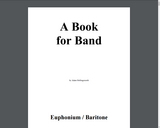
Music lessons for Euphonium/Baritone
- Subject:
- Arts and Humanities
- Performing Arts
- Material Type:
- Lesson
- Provider:
- North Dakota State College of Science
- Author:
- Adam Hollingsworth
- Date Added:
- 08/20/2020

Music lessons for Euphonium/Baritone
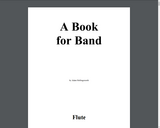
Welcome to the band here at NDSCS! We are going to have a lot of fun, making music, and getting better and better each time we meet. Whether this is the first time you’ve ever played in a band, or you’ve been playing for years; whether you were your high school’s top chair player or you struggled to get through a B♭ concert scale, there is a place for you here.

Music Lessons for French Horn
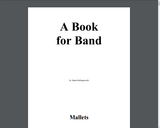
Music lessons for mallets

Music Lessons for Tenor Saxophone
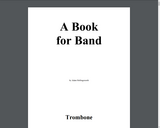
Music Lessons for Trombone
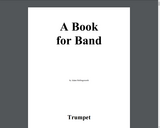
Music Lessons for Trumpet
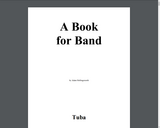
Music lessons for tuba
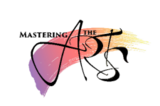
This resource was created by Cindy Sellhorst, in collaboration with Lynn Bowder, as part of ESU2's Mastering the Arts project. This project is a four year initiative focused on integrating arts into the core curriculum through teacher education and experiential learning.
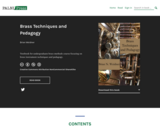
Textbook for undergraduate brass methods course focusing on brass instrument techniques and pedagogy.
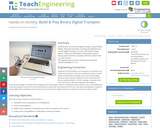
Students wire up their own digital trumpets using a MaKey MaKey. They learn the basics of wiring a breadboard and use the digital trumpets to count in the binary number system. Teams are challenged to play songs using the binary system and their trumpets, and then present them in a class concert.
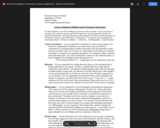
For this assignment, you will be building an instrument with your group. To get you started on choosing your instrument, please read the following primer and get acquainted with the four families of instruments. Then make decisions on the materials you will use, which instrument you will actually construct, and which family it will belong to. You will also need to designate the following members: 1) Project Coordinator 2) Historian 3) Bibliographer 4) Head Foreman.

Short Description:
Open Music Theory is a natively-online open educational resource intended to serve as the primary text and workbook for undergraduate music theory curricula. OMT2 provides not only the material for a complete traditional core undergraduate music theory sequence (fundamentals, diatonic harmony, chromatic harmony, form, 20th-century techniques), but also several other units for instructors who have diversified their curriculum, such as jazz, popular music, counterpoint, and orchestration. This version also introduces a complete workbook of assignments.
Long Description:
Open Music Theory Version 2 (OMT2) is an open educational resource intended to serve as the primary text and workbook for undergraduate music theory curricula. As an open and natively-online resource, OMT2 is substantially different from other commercially-published music theory textbooks, though it still provides the same content that teachers expect from a music theory text.
OMT2 has been designed inclusively. For us, this means broadening our topics beyond the standard harmony and atonal theory topics to include fundamentals, musical form, jazz, pop, and orchestration. And within those traditional sections of harmony and atonal theory, the authors have deliberately chosen composers who represent diverse genders and races. The book is accessible. And perhaps most importantly, the book is completely free and always will be.
The text of the book is augmented with several different media: video lessons, audio, interactive notated scores with playback, and small quizzes are embedded directly into each chapter for easy access.
OMT2 introduces a full workbook to accompany the text. Almost every chapter offers at least one worksheet on that topic. Some chapters, especially in the Fundamentals section, also collect additional assignments that can be found on other websites.
Version 2 of this textbook is collaboratively authored and edited by Mark Gotham, Kyle Gullings, Chelsey Hamm, Bryn Hughes, Brian Jarvis, Megan Lavengood, and John Peterson.
Word Count: 40576
(Note: This resource's metadata has been created automatically by reformatting and/or combining the information that the author initially provided as part of a bulk import process.)
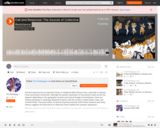
Call and response has an important history in traditional West African music, especially in spiritual music and protest movements. Although the specific expression of this practice varies across the diaspora depending on the geographic location and musical lineage of practitioners, there are striking similarities in seemingly disparate locations, like the southern United States, Cuba, and northern Brazil. The preservation of call and response practices within these locations (and many others) suggests the importance of collectivity when healing from systemic oppression.
With this interest in mind, David Diaz invites students to join into this call and response by listening to and producing sounds and/or movements as they are comfortable. In joining a collective, there is also space for individuality, and even dissonance. In that interest, students can recognize the shared histories and practices that the music reveals, as well as the particularities of specific cultures and historical actors.
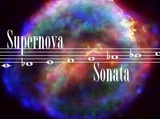
This new annotated guide (part of a series devoted to resources for enjoying or teaching astronomy) features over 250 pieces of music inspired by serious astronomy, including both classical and popular music examples. YouTube links are given for the vast majority, so you (or your students) can listen to them.
Among the pieces included is:
1) a Hubble Space Telescope cantata,
2) eight rock songs about black holes with reasonable science,
3) a supernova piano sonata,
4) a musical exploration of the Messier catalog of nebulae, clusters, and galaxies,
5) a moving song about Stephen Hawking,
6) Moon songs by the Grateful Dead, George Harrison, and the Police,
7) piano pieces “for children with small hands” named after the constellations,
8) operas about Galileo, Kepler, and Einstein,
and many more.
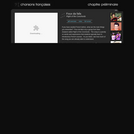
Chansons françaises is the integrated music component of Français interactif. Chansons features a French or Francophone song, related to each chapter's cultural or pedagogical focus, presented via audio or video. Accompanying pdfs provide additional information, as well as comprehension exercises. Songs act as a portal to various Francophone cultures and musical genres. Aural comprehension and study of lyrics afford students practice with culturally authentic text and expression. Students discover yet another reason to be passionate about studying French!

This resource was created by Jennifer Trenhaile, in collaboration with Dawn DeTurk, Hannah Blomstedt, and Julie Albrecht, as part of ESU2's Integrating the Arts project. This project is a four year initiative focused on integrating arts into the core curriculum through teacher education, practice, and coaching.
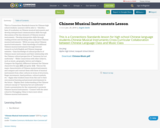
This is a Connections Standards lesson for Chinese high school students.
Learners will be able to:
• Identify a base of vocabulary on Chinese musical instruments and develop interpersonal
communication skills through discussions of the key elements of Chinese musical instruments.
• Develop interpretive skills through reading articles and watching video clips about Chinese
musical instruments.
• Write an essay about Chinese musical instruments.
• Gain knowledge of traditional Chinese musical instruments through Internet research on both
English and Chinese language websites.
• Gain knowledge of cultural products of Chinese music instruments and their relationship with
the Chinese cultural perspective of “harmony but not uniformity”.
• Make connections with other subjects, such as music, geography, history and religion.
• Compare the linguistic difference between the Chinese characters for pipa
琵琶 and guitar 吉他.
• Discuss the major characteristics of Chinese musical instruments and compare and contrast them
with those of musical instruments from other cultures in terms of structures, finger movements,
hand positions, cultural symbols, etc.
• Apply what students learn from this unit to their own musical learning and personal
entertainment in the future.
• Explain their understanding of the Chinese cultural concept of “harmony but not uniformity”.
• Create a presentation for the community to promote Chinese musical instruments.
• Connect with the sister school in Chongqing, China to learn more about Chinese musical instruments.

About the Arts, Care & Connection Lesson Collection: Arts for Learning Northwest collaborated with Oregon teaching artists on this collection of arts integration modules designed for K-5 students, with integrated social emotional learning content in the areas of dance, visual arts, theater, and music.

This class explores sound and what can be done with it. Sources are recorded from students’ surroundings - sampled and electronically generated (both analog and digital). Assignments include composing with the sampled sounds, feedback, and noise, using digital signal processing (DSP), convolution, algorithms, and simple mixing. The class focuses on sonic and compositional aspects rather than technology, math, or acoustics, though these are examined in varying detail. Students complete weekly composition and listening assignments; material for the latter is drawn from sound art, experimental electronica, conventional and non-conventional classical electronic works, popular music, and previous students’ compositions.